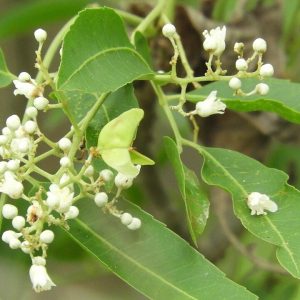Buttonbush
(Cephalanthus occidentalis)

Buttonbush
- Full sun to part shade
- Easy Care
- Indoor/Outdoor
Why we chose it for Kansas City
Quick Facts:
Plant type
Somewhat coarse, deciduous shrub or small tree with an open-rounded habit
Plant height:
6-12’ (infrequently to 20’)
Growing conditions
Easily grown in moist to average soils in full sun to part shade. Tolerates flood conditions and shallow standing water. Adapts to a wide range of soils. Pruning may be done in winter to shape into a small tree. If plants become too big, they may be cut back at ground-level to turn back into a small shrub.
Location
Indoor/Outdoor
Season to flower
Late June-July
Additional information:
Buttonbush is common throughout Missouri, most frequently occurring in wet open areas, low woods, thickets, swamps, upland sink-hole ponds, river bottomland and stream/pond margins (Steyermark).
Tiny, tubular, 5-lobed, fragrant white flowers appear in dense, spherical, long-stalked flower heads (to 1.5” diameter) in early to mid-summer. Long, projecting styles give the flower heads a distinctively pincushion-like appearance. Flower heads are very attractive to hummingbirds, butterflies, and other insect pollinators. Flower heads mature into hard spherical ball-like fruits consisting of multiple tiny two-seeded nutlets. Fruiting heads usually persist throughout the winter. Ovate to elliptic glossy bright green leaves (to 6” long) are in pairs or whorls. Leaves emerge late in spring.
How to plant
For indoor planting:
Use a container that is at least four inches deep. There should be drainage holes in the bottom. In spring, fill the container to the top with a moist growing medium, level off and then gently press down one half inch. There are many mixes on the market that contain predominantly peat moss and vermiculite.
Sow seeds on the surface of the mix and cover to a depth of one quarter inch. Clearly label and date a tag using pencil. Ink will quickly fade.
Water from above with a watering can that dispenses fine droplets. Large droplets splash the seeds out of the pot. Seeds should sprout within 10-15 days. Grow in containers for 4-6 weeks then plant outside.
For outdoor planting:
In spring, prepare a smooth seed bed (10-15 inches in diameter) when the soil is workable. Scatter seeds evenly over the area. Mulch the area lightly with fine ground leaf mulch.
Water when it is dry in the spring. Seeds should sprout within two weeks. Seedlings can be transplanted out of this bed in March or early April of the second season.



